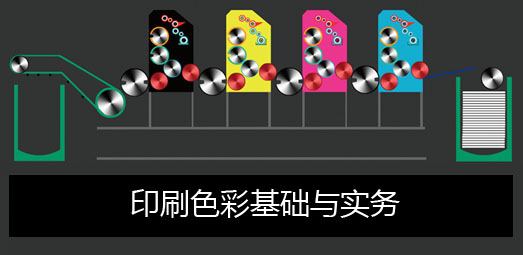
当前课程知识点:Diagnostics in Chinese Medicine > Week 11 Diagnosis methods:Listening and smelling examination > 9.2.4 Cough > 9.2.4 Cough
返回《Diagnostics in Chinese Medicine》慕课在线视频课程列表
返回《Diagnostics in Chinese Medicine》慕课在线视频列表
同学们好
下面我们来学习咳嗽的声音
咳嗽 是临床上非常常见的一个症状
它是肺气向上
冲击咽喉而发出的一种
咳-咳 的声音
其中 有声无痰为咳 有痰无声为嗽
有痰 有声为咳嗽
咳嗽病位 几乎见于所有的肺系疾病
也就是说
只要肺有病变都可以见到咳嗽
另外 其他脏腑疾病
也可以会影响到肺而伴见咳嗽 比如
心肺气虚导致咳嗽
脾肺气虚也会导致咳嗽
肺肾两虚会致咳嗽
肝火犯肺也会导致咳嗽
因此
《素问.咳论》中有
五脏六腑皆令人咳非独肺也 的记载
因为任何寒热虚实的因素
只要引起肺的宣肃失常
肺气上逆都会引起咳嗽
因此临床上可以通过对咳嗽的分辨
及对痰的色 量 质的变化
并参考咳嗽的时间 病史及其兼证
来辨别病证的寒热虚实
比如 我们来听这个声音
(重浊紧闷的咳声)
这种咳嗽声音
重浊紧闷
通常是属于实证
多由于外感风寒或痰湿阻肺 肺失宣降所致
下面这一种咳嗽声音
(轻清低微 咳声无力)
这种咳嗽声音
轻清低微 咳声无力
通常见于虚证
它是由肺气虚损 失于宣降所引起的
下面这一种咳嗽声音
(咳声不扬)
这种咳声不扬 咳痰黄稠
痰黏难咯
通常见于热证
多因热邪犯肺 肺津被灼所致的病证
这里要强调一下 热痰的颜色
可以是白色 也可以是黄色
甚至可以是绿色
关键在于痰 是否黏稠
因为 热灼伤津
咳痰一定黏稠
而白色黏稠痰和黄色或绿色黏稠痰相比
热势相对要轻一些
病情也就相对轻一些
下面这一种咳嗽声音
(咳有痰声)
这种咳嗽有明显的痰声
而且痰多容易咳出来
这种痰 称为湿痰
这是由于痰湿阻肺所导致的病证
下面来听两段咳嗽声音
(干咳一 无痰声)
(干咳二 无痰声)
刚才我们听到的这两个咳嗽声音是干咳
干咳 一定是伴有无痰
或者痰非常少而黏
很难咳出来的病证
才称为干咳
这里 需要强调一下
在临床上 我们经常会碰到 有人描述他的咳嗽为干咳
但是如果问他 有痰吗
他说 能够咳出痰来
这种能够咳出痰来的咳嗽
(通常)不是属于干咳
或者病人虽然不容易咳出痰来
但是却能听到有很明显的痰声
这些咳嗽都不能够叫做干咳
干咳无痰或少痰 主要见于实证的
燥热犯肺 肺津被灼
所以痰量非常非常地少
或者见于阴虚肺燥
也可以导致干咳无痰或少痰
由此我们可以看出 任何寒热虚实的因素
只要引起肺的病变
都会导致肺失宣肃 肺气上逆
而引起咳嗽
所以通过听咳嗽的声音
并结合痰的色 量 质的变化
并参考咳嗽的时间 病史及其兼症
来共同辨别病证的寒热虚实
以上是咳嗽的临床意义
本节课就上到这里
-Introductory remark
--QQ groups、WeChat public account
-Introduction
--【Discussion 1】Why do you want to take this course?
-Unit test for Introduction
-1.1 Yin-yang theory
-1.2 The theory of five elements
--1.2.1 The theory of five elements
--1.2.2 Application of the theory of five elements
-Frequently Asked Questions
-Unit test for week 1
-2.0 Outline
--【Discussion 2】How to understand the holistic view centered on the Zang Fu theory?
-2.1 Liver
--【Discussion 3】Why is repose more important than vigorous exercise in recuperation for patients with
-2.2 Heart
-2.3 Spleen
-2.4 Lung
--2.4 Lung
-2.5 Kidney
-2.6 Six fu organs
-Frequently Asked Questions
-Unit test for week 2
-3.1 Qi
--3.1 Qi
-3.2 Blood
-3.3 Body fluid
-3.4 The relationship of qi, blood and body fluid
--3.4 The relationship of qi, blood and body fluid
--【Discussion 4】A discussion about the theory of qi, blood and body fluid
-Frequently Asked Questions
-Unit test for week 3
-4.0 Outline
-4.1 Six exogenous factors
--4.1.2 Nature and pathogenicity of wind and cold
--4.1.3 Nature and pathogenicity of summer heat and damp
--4.1.4 Nature and pathogenicity of dryness and fire
-4.2 Etiology of visceral impairment
--4.2 Etiology of visceral impairment
-Frequently Asked Questions
-Unit test for week 4
-5.0 Outline of inquiry
--【Discussion 5】If you were a patient, how would you describe your condition to your doctor first?
-5.1 Inquiry of Chills and fever
--5.1.1 Chills and fever(Aversion to cold with fever)
--5.1.2 Chills and fever(Chills without fever)
--5.1.3 Chills and fever(Fever without chills)
--5.1.4 Chills and fever(Alternative chills and fever)
--【Discussion 6】How to understand "if you have clinical manifestations of cold, that is exterior syndr
-5.2 Inquiry of perspiration
-Frequently Asked Questions
-Unit test for week 5
-5.3 Inquiring of pain
--【Discussion 7】How to understand "stagnation leading to pain and innourish leading to pain"?
-5.4 Inquiring of head, body, thorax and abdomen
--5.4 Inquiring of head, body, thorax and abdomen
-5.5 Inquiring of ears and eyes
--5.5 Inquiring of ears and eyes
-5.6 Inquiring of sleep
-5.7 Inquiring of food and drink, appetite and taste
--5.7 Inquiring of food and drink, appetite and taste
-5.8 Inquiring of defecation and urination
--5.8.1 Inquiring of defecation
--5.8.2 Inquiring of urination
-5.9 Inquiring of infantile and women's disease
--5.9 Inquiring of infantile and women's disease
-Unit test for week 6
-6.0 Outline of Observation
--【Discussion 8】Please use the whole body inspection (including the expression, complexion and figure)
-6.1.1 Observation of vitality
--6.1.1 Observation of vitality
-6.1.2 Observation of the color
--6.1.2.1 The content, principles of inspection of the color
--6.1.2.2 Indication of diseases by five colors
--【Discussion 9】How do you understand the normal complexion of a normal people?
-6.1.3 Observation of the appearance
--6.1.3 Observation of the appearance
-6.1.4 Observation of figure and posture
--6.1.4 Observation of figure and posture
-Unit test for week 7
-6.2.1 Observation of head and face
--6.2.1 Observation of head and face
-6.2.2 Observation of five sensory organs
--6.2.2.1Observation of five sensory organs(observation of eyes,ears,nose)
--6.2.2.2Observation of five sensory organs(observation of lips,teeth and gums,throat)
-6.2.3 Observation of body
-6.2.4 Observation of limbs
-6.2.5 Observation of two lower orifices
--6.2.5 Observation of two lower orifices
-6.2.6 Observation of skin
-6.3 Observation of excreta
-6.4 Observation of infantile fingerprints
--6.4 Observation of infantile fingerprints
-Frequently Asked Questions
-Unit test for week 8
-7.1 Outline of tongue inspection
--7.1.1 The morphology and structure of the tongue
--7.1.2 The principle of tongue examination
--7.1.3 The method and precaution of tongue examination
--7.1.4 The content of tongue examination, normal tongue
-7.2 Inspection of tongue structure
--7.2.1 Observe the color of tongue
--7.2.2 Observe the shape of tongue
--7.2.3 Observe the states of tongue
--7.2.4 Observation of sublingual vein
-7.3 Observation of tongue coating
--7.3.1 Observation of coating texture
--7.3.2 Observe the color of coating
-7.4 Clinical significance of tongue diagnosis
--7.4 Clinical significance of tongue diagnosis
--【Discussion 10】Why to observe the tongue can be used to diagnose disease?
-Unit test for week 9
-8.1 The principle of pulse examination
--8.1 The principle of pulse examination
-8.2 The regions and methods of pulse examination
--8.2 The regions and methods of pulse examination
-8.3 The elements of pulse examination and the normal pulse
--8.3 The elements of pulse examination and the normal pulse
-8.4 Characteristics and significance of pulse
--8.4.1 Superficial pulse, deep pulse, slow pulse, rapid pulse
--8.4.2 Surging pulse, thin pulse, long pulse, short pulse
--8.4.3 Feeble pulse, forceful pulse, slippery pulse, uneven
--8.4.4 Taut pulse, tense pulse,soggy pulse, moderate pulse
--8.4.5 Knotted, slow-regular-intermittent, irregularly abrupt
-8.5 Similar pulse, concurrent pulse, pulse indicating deterioration of visceral qi۞
--8.5 Similar pulse, concurrent pulse, pulse indicating deterioration of visceral qi۞
--【Discussion 11】Why is complex pulse more common than single-factor pulse?
-8.6 Women’s pulse, children’s pulse
--8.6 Women’s pulse, children’s pulse
-8.7 The clinical significance of pulse diagnosis
--8.7 The clinical significance of pulse diagnosis
-Unit test for week 10
-9.1 Listening
-9.2.1 Abnormal sound
-9.2.2 Abnormal language
-9.2.3 Respiratory abnormality
--9.2.3 Respiratory abnormality
-9.2.4 Cough
--【Discussion 12】How to observe the patient's cough sound and sputum changes to determine whether the
-9.2.5 Abnormal sounds of the stomach and intestines
--9.2.5 Abnormal sounds of the stomach and intestines
-9.3 Smelling
--【Discussion 13】How to diagnose by smelling?
-Unit test for week 11
-10.1 The method, meaning and precautions of palpation
--10.1 The method, meaning and precautions of palpation
-10.2 Contents of palpation
--10.2.1 Palpating chest and hypochondrium
--10.2.2 Palpating stomach and abdomen
--10.2.4 Palpating hands and feet, palpating acupoints
--【Discussion 14】How to determine whether external or internal injuries?
-Unit test for week 12
-Conclusion
-Final Exam
--Final Exam


